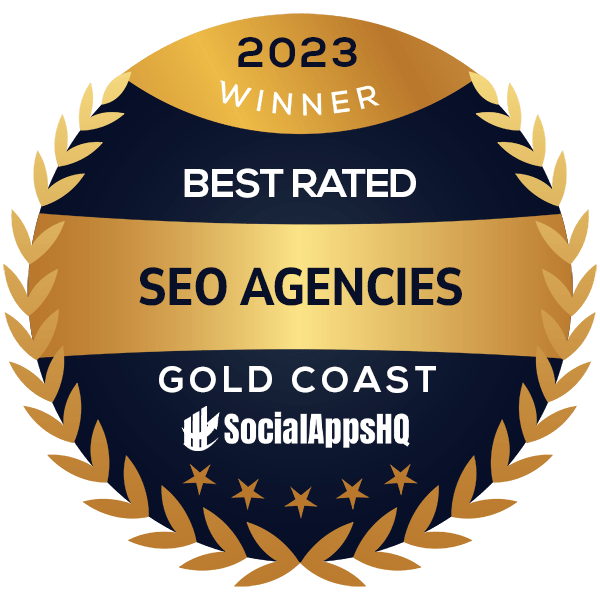
More than 2 billion people on the planet use Facebook. Admit it – we love it, and for so many reasons as well. It allows us to maintain personal connections with various people, from old school friends, to people you met just last weekend on a night out, plus that we can indulge in the guilty pleasure of monitoring our exes without embarrassing ourselves. And it’s the place where businesses and consumers meet, allowing businesses to execute Social Media Marketing – apparently without the latter being spammed.
It is the one social network that almost all of us are using, and it seems like you can’t keep in touch with others or execute a successful Social Media Marketing campaign without Facebook, and its easy to understand why. Social Media Marketing is almost synonymous with Facebook marketing as Facebook was among the first social networks that introduced effective tools for promoting your business online. For a long time, Facebook Business Pages seemed to be the wonderful free marketing tool that allowed anyone to make money with minimal investment. However, the rules of the game have changed in recent years, and Facebook is becoming largely a pay-to-play platform – and that would not be the only disadvantage of relying only on the largest social network to communicate to your audiences.
The Downsides
Businesses have a complicated relationship with Facebook. Free marketing Facebook Business Pages are great, but the arguing via comments, privacy issues, permission and constant changes/updates are hard to deal with. Many individuals and businesses also complain about having their accounts disabled due to “suspicious activity” for various reasons. The more you actually use Facebook for business and analyse the pros and cons, the more reasons you will have to consider other online platforms as well.
“If you use social media, you are not the customer. You are the product. It is built to manipulate you into using it more, so they can run more ads and make more money.” – Seth Godin on Social Media
So, as long as users are the product, Facebook can change the rules of the game in order to start paying for the services you initially used for free.
In spite of all the negative aspects of the largest social media platform in the world, businesses flock to it thinking they are on top of marketing in the modern world and that their Social Media Marketing strategy will produce the results expected. 2 billion people use Facebook, so many think “What other options do we have?”.
What can be done?
It is possible to stop depending on Facebook, and the first step would be asking yourself “What other channels is my audience using? Where do my ideal customers hang out? Where can I connect to potential customers, engage, and offer value?” Do some research and see what other platforms your buyer personas are using. Since the average Internet user has an average of 7.6 social media accounts, you will soon discover that you can diversify your advertising channels and stop relying heavily on Facebook. Let’s see what alternatives you have to Facebook:
Instagram has evolved from a photo-sharing platform into a social network also focusing on video and live video. It is a mobile-first platform, so most users are on their phones when using Instagram. But the moment when Instagram really gained traction was when Instagram Stories was introduced – a feature enabling users to share the moments of the day, without saving them to their profiles as an upload. Instagram Stories can be made more engaging by adding questions, starting polls, adding music, using fun stickers. There are multiple ways that Instagram can be used for business:
- Talking about the solution you provide and the process behind the service, not about the product. Just make sure it is aesthetically pleasing as visual content should be your most important asset!
- Use Instagram Stories to capture behind-the-scenes content or to communicate to your audiences through adverts that can include calls-to-action and promotions
- Edit your Instagram Bio and use the only clickable link in it to send users to app downloads, event registrations, and purchases.
Founded in 2006, Twitter is a social media and online news platform where people communicate in short messages – up to 240 characters long – called tweets. Twitter is mostly known for the never-ending conversation it displays to users in their feeds; rather than seeing what has happened since you’ve last logged into Twitter, you see the news and conversation that are happening right now. Business opportunities on Twitter include:
- Using familiar hashtags or creating your own to draw attention to your brand or events you are holding
- Handling customers issues through direct messages
- Engaging with audiences through photos, GIFs, and polls
- Using the Live Tweet feature to get a topic trending on Twitter – using occurring with TV shows and televised events
- Taking part to scheduled Twitter chats
- Advertising on Twitter by using tools like Promoted Tweets, Promoted Accounts, Promoted Trends, Promoted Video, and Twitter Amplify.
LinkedIn is a professional network that provides opportunities to find a job, attract talent, and create a thought leader reputation for your company. The platform launched in 2003 has a total number of 630 million users and continues to attract a number of 2 new users every second. LinkedIn is also known for being the first channel that B2B marketers use to distribute content and also presents other valuable features for businesses:
- Creating a LinkedIn company page to allow potential customers to learn more about your business and products
- Creating career pages to attract and select the right job seekers that fit into your company culture
- Joining and creating LinkedIn groups
- Publishing and sharing relevant content
- Using sponsored ads.
YouTube
If you are not thinking of YouTube as social media, you should. This video platform is not just about posting videos; YouTube creators have also gathered entire communities around their content as connecting via video can lead to significant social engagement. The trick is to create videos that can connect your potential customers to your brand – videos such as:
- Brand videos that present your business and its values
- How-to videos that provide educational value
- Animated videos for fun
- Interviews with influencers and thought leaders in the industry
- Behind-the-scene videos that reveal your company culture and people that are a part of your business
- Product videos that demonstrate what your products can do for customers
- Video testimonials where satisfied clients talk about their experience
- Case studies that show how your clients have used your product in a successful manner.
The last three tools should be used for prospects located in the middle or bottom of your marketing funnel – people whose attention you have already caught and that should be nurtured in order to convert them into customers.
Many people see Pinterest as a platform where you look at interior decoration and culinary ideas, but in fact there is a lot more about this network. Some ideas to capitalise on Pinterest to promote your business include:
- Use promoted pins as 50% of users made a purchase after seeing one
- Include among your images pictures that contain text on topics like “10 tips to…”
- Use Pinterest boards and community boards – these are collections of pins that are organised based on topics
- Use pins to link back to the original source in order to get referral traffic from Pinterest
- Communicate regularly to ensure brand visibility as a Pinterest feed is just like any other feed from a social network – a collection of content from users and boards that a user has followed.
TikTok
TikTok is an emerging social network targeted at teenagers and allowing users to create short music-focused videos and edit them with lenses, filters, and AR (augmented reality) features. Filling the gap left by Vine’s departure in 2017, TikTok has managed to attract young users and business owners with short, highly engaging content. It is one of the social networks looking to attract the attention of Generation Z and it has recently introduced features for businesses, including advertisement. TikTok is prepared to offer four types of advertisements in its app in 2019:
- In feed native content (similar to Instagram story ads)
- Brand takeovers (allow one brand to take over the app for a day and allow you to create images, GIFs, and videos)
- Hashtag challenges (create a hashtag and challenge participants in exchange for a prize)
- Branded lenses that users can apply in their videos.
With so many possibilities out there, your Social Media Marketing strategy can be highly effective without your business ever posting on Facebook. Make sure your audience can be reached and engaged on other platforms and from that point don’t let anything stop you!
Sharing is caring!




